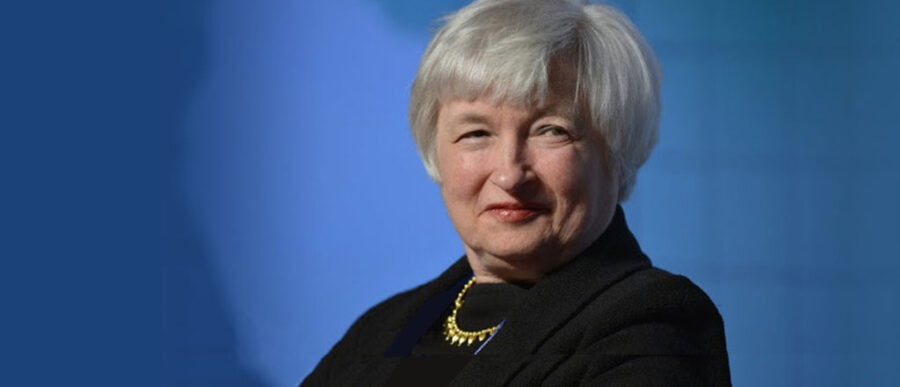As the U.S. Federal Reserve last month ended its two-year stimulus, or “quantitative easing” (QE), program of buying mortgage-backed securities from banks and institutions, a rash of concerns arose about the future of the economy.
Expectations must be realistic about the impact of the Fed’s actions, according to Wharton finance professor Krista Schwarz, whose current research work is on quantitative easing. She noted the objectives set for the Federal Reserve by the U.S. Congress — “maximum employment, stable prices and moderate long-term interest rates.” However, the Fed’s powers have been described as “a very blunt tool” to affect the economy, she noted. “It is the equivalent of donating to a large charity versus going into a soup kitchen and doling out the meals yourself,” she said, speaking on the Knowledge at Wharton show on Wharton Business Radio on SiriusXM channel 111. (Listen to the podcast at the top of this page.)
The Fed recognizes that employment growth will be achieved largely through the mechanism of price stability, and hence the emphasis on controlling the inflation rate, said Schwarz. The annual inflation rate was at 1.7% as of September 2014, according to latest government data, well under the “target” of 2% that the previous Fed chairman Ben Bernanke set. Schwarz noted that current Fed chair Janet Yellen is “addressing a huge issue with something that is going to work through asset prices — through the dollar, the equity markets or interest rates.”
The Fed’s actions are “…the equivalent of donating to a large charity vs. going into a soup kitchen and doling out the meals yourself.”
Wielding QE
Since the onset of the recession in late 2008, the Fed has launched three rounds of quantitative easing, buying a total of $4.5 trillion in mortgage-backed securities. Central banks use the QE tool of buying assets from banks in exigencies. It is aimed at increasing the prices of those assets and the monetary base, thereby keeping interest rates low. In normal conditions, central banks buy and sell government bonds to control interbank interest rates.
How the ending of the latest QE program will affect the economy depends on how one perceives its impact thus far, according to Schwarz. The Fed itself has said it “sees the risks to the outlook for economic activity and the labor market as nearly balanced.” It noted that while lower energy prices could depress inflation in the near term, the likelihood of it persisting below 2% has “diminished somewhat…” The Fed also reported a “substantial improvement” in the labor market outlook and “sufficient underlying strength in the broader economy to support ongoing progress toward maximum employment in a context of price stability.” All those helped it justify ending the stimulus program.
Accommodative Stance
Schwarz commended the Fed for saying it will maintain an “accommodative stance” going forward and retain its asset holdings at current levels of $4.5 trillion. The Fed has said it would continue to reinvest payments from its debt holdings and maturing Treasury securities. With that, she felt the “conditions [in the economy] should largely remain as they have been and continue to improve.”
Schwarz also noted that as the Fed wants to keep the target interest rate at between 0% and a 0.25% for quite some time, it is flexible on making that period shorter or longer as prevailing conditions warrant. In order to ensure economic growth under current conditions, the task for Fed chair Yellen is “to keep conditions accommodative despite QE having ended,” she said. “Rates might begin to change at the end of 2015, but this could drag on longer.”
“We are not 100% away from the danger zone, although we are much further away than we were last year, or two or three years ago.”
As things look now, the economic recovery will be “a slow and steady path,” but there is some reason to cheer, according to Schwarz. “Given the massive shock we had in 2008-2009, relative to the euro area and Japan, we are doing fine,” she said. She noted that the European Central Bank has limited powers to respond to recessions compared to the U.S. Fed, “which can basically act on behalf of the government.”
If it feels like we are a long way from the healthy economic times of a decade or two decades ago, there is good reason for it, said Schwarz. “We had a financial crisis, which is much different from any typical recession,” she explained. “We had massive disruption, massive elimination of wealth, massive policy and structural shifts in how things are working now. You have investors and firms who are all risk averse — everyone is trying to save.” That rush to hold cash and de-lever, or reduce debt, will subside over time, she added.
“We are not 100% away from the danger zone,” said Schwarz. “We certainly are much further away from it than we were last year or two years ago or three years ago.”
Trends to Watch
Going forward, the indicators to watch out for include inflation, demand growth and wage growth. “The real risk now is inflation,” Schwarz said, adding that it is subject to volatility in oil and food prices. “What we would need to see is … an increase in demand … and that has unfortunately been struggling thus far,” she added. She would also like to see wage growth along with decreasing unemployment. The U.S. unemployment rate fell to 5.9% in September, down from 7.2% a year earlier and 10% in October 2009, according to the latest government data.
As much as the Fed wants labor markets to improve, it can work toward that only indirectly by promoting long-term price stability, said Schwarz. “But the thing they can directly clearly affect is inflation,” she added. “They are printing the money, deciding how to manage their portfolio [and] what rate to give banks for holding reserves at the Fed — and so they are pinning down short rates and affecting long rates as well.”



